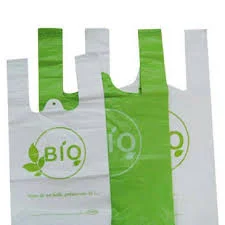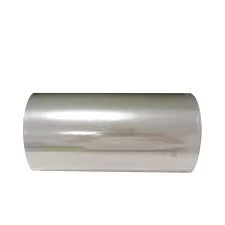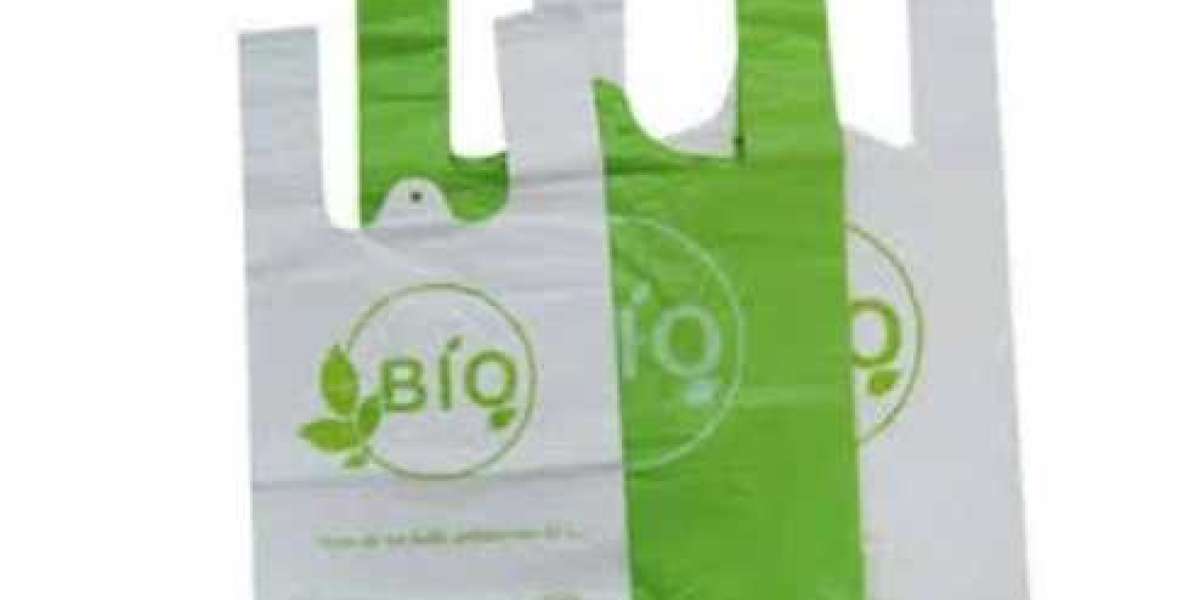In recent years, the urgent need for more eco-friendly packaging solutions has driven the development of biodegradable materials. Among them, polylactic acid (PLA) has emerged as a promising option. This blog aims to delve into the intricate process of how PLA biodegradable packaging film is degraded and explore its significant environmental impact.
I. What is PLA Biodegradable Packaging Film
- Composition: PLA is derived from renewable resources such as corn, sugarcane, or other starch-rich crops. It is created through fermentation and polymerization processes.
- Advantages: PLA possesses excellent barrier properties, transparency, and printability, making it suitable for various packaging applications. Additionally, it is non-toxic and doesn't release harmful chemicals during degradation.
- Application Areas: PLA biodegradable packaging film finds utility in food packaging, agricultural applications, personal care products, and more.

II. The Degradation Process of PLA Biodegradable Packaging Film
A. Initial Stage: Surface Erosion and Hydrolysis
- Susceptibility to Moisture and Heat: PLA's degradation begins with the absorption of moisture, facilitated by its hydrophilic nature. Higher temperatures accelerate this process.
- Water Penetration Mechanism: Water molecules diffuse into the PLA structure through amorphous regions, causing chain scission and resulting in surface erosion.
- Chemical Reactions: Hydrolysis breaks down the ester bonds within PLA, forming lactic acid and other oligomers.
B. Microbial Degradation: Role of Microorganisms in Breaking Down PLA
- Compatibility with Microbes: Certain bacteria and fungi possess the enzymes needed to metabolize PLA. They secrete lipases and proteases to break down the polymer into smaller fragments.
- Enzymatic Degradation: Lipases catalyze the hydrolysis of PLA, converting it into lactic acid and other monomers. Proteases assist in breaking down PLA proteins.
- Factors Affecting Microbial Degradation: Temperature, pH, oxygen levels, and the availability of essential nutrients affect the rate of microbial degradation.
C. Final Breakdown: Conversion into Harmless Byproducts
- Formation of Low Molecular Weight Fragments: As PLA degrades, it transforms into lower molecular weight fragments, making it more accessible to microorganisms.
- Transition to Microscopic Debris: The macroscopic debris continues to degrade, eventually breaking down into microscopic particles.
- Bioassimilation: Microorganisms and plants utilize the degraded fragments as a source of energy and nutrients, completely assimilating them into the environment.
III. Factors Influencing PLA Biodegradation
A. Environmental Conditions
- Temperature and Humidity: Higher temperatures and increased humidity can accelerate the degradation process.
- Soil and Water Composition: Varied soil and water compositions affect the availability of microorganisms and enzymes, which influence PLA degradation.
- Presence of Microorganisms and Enzymes: A diverse microbial community with appropriate enzymes facilitates efficient degradation.
B. Material Properties
- Molecular Weight and Crystallinity: Lower molecular weight and higher amorphous content in PLA enhance its degradability.
- Thickness and Surface Area: Thinner films and increased surface area promote faster degradation.
- Additives and Modifiers: Incorporation of certain additives or modifiers can alter PLA's degradation characteristics.
C. Composting and Industrial Degradation
- Controlled Composting Facilities: PLA is often processed in specialized composting facilities that provide ideal conditions for efficient degradation.
- Industrial Processes and Timeframes: Industrial composting processes employ specific temperature and time requirements for PLA degradation.
- Verification and Certification Standards: Various organizations ensure that biodegradable claims meet specific degradation standards with rigorous testing and certification.

IV. Environmental Impact and Benefits
A. Reduced Carbon Footprint
- PLA Production from Renewable Resources: PLA is derived from sustainable sources such as corn or sugarcane, reducing reliance on fossil fuels and minimizing greenhouse gas emissions.
- Lower Greenhouse Gas Emissions: PLA production emits fewer greenhouse gases compared to traditional plastics, contributing less to climate change and global warming.
- Mitigation of Climate Change Effects: By using PLA biodegradable packaging film, we can help mitigate the adverse effects of climate change on our planet.
B. Marine and Wildlife Conservation
- Reduction in Plastic Pollution: One of the critical environmental issues today is plastic pollution, particularly in oceans. PLA's biodegradability helps reduce this pollution and prevents harm to marine life.
- Protection of Marine Life: Marine animals often mistake plastic for food and can suffer from ingestion and entanglement. PLA's degradation into harmless byproducts ensures a safer environment for marine creatures.
- Preservation of Biodiversity and Ecosystems: Decreasing the presence of plastic waste through the adoption of PLA biodegradable packaging film fosters the preservation of biodiversity and the health of ecosystems.
C. Waste Management and Landfill Reduction
- Decreased Burden on Landfills: Traditional plastics take hundreds of years to decompose, creating a significant strain on landfills. PLA's faster degradation process reduces the burden on these sites and allows for more efficient waste management.
- Facilitation of Organic Waste Composting: PLA can be composted along with organic waste, promoting the production of nutrient-rich soil amendments and closing the loop in organic waste management.
- Encouragement of Better Waste Management Practices: The use of PLA biodegradable packaging film encourages individuals and businesses to adopt better waste management practices, promoting a circular economy and sustainable resource management.

Conclusion
PLA biodegradable packaging film offers a sustainable and eco-friendly solution for packaging needs. Understanding the intricate process of degradation helps us appreciate the positive environmental impact of PLA. The degradation of PLA involves surface erosion, microbial breakdown, and conversion into harmless byproducts. Various factors, including environmental conditions, material properties, and composting processes, influence the rate of degradation. Adopting PLA biodegradable packaging film can contribute to reduced carbon footprint, protect marine and wildlife, and improve waste management practices. As we continue to research and develop this innovative solution, PLA has the potential to revolutionize the packaging industry and usher in a more sustainable future for our planet.
CHANGZHOU GREEN CRADLELAND MACROMOLECULE MATERIALS CO., LTD was established in 2011. It is a professional high-tech industrial company focusing on the RD, production and export of PVA water-soluble film, PVA water-soluble packaging bag, and PVA water-soluble nonwoven fabric. The company is positioned as an expert in the application of functional new materials in the field of general health, and is mainly committed to providing customers with safe, healthy and environmentally friendly products. Welcome to inquiry if you need to know more about PLA biodegradable packaging film details or order wholesale.
The picture is for reference only, please consult for more details.
Email:lucifer@pvalzy.com



